Does reading piano sheet music frustrate you? You’re not alone! The way many of us were taught is not always the best way. Using acronyms like “All Cows Eat Grass” can be slow and ineffective, and acronyms doesn’t teach you how written music actually works.
In this lesson, we’ll teach you a better way to read notes. It has nothing to do with acronyms and everything to do with making sense of the grand staff.
Table of Contents:
Before we dive into the tips and tricks, let’s review the traditional way of learning how to read notes.
Here we have the grand staff.
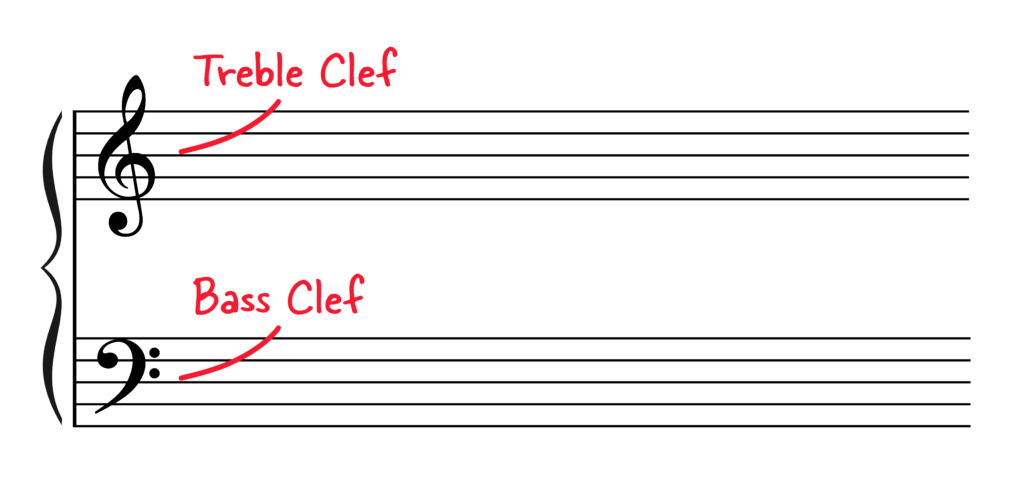
We plot notes on the five lines and four spaces of each clef. Traditionally, music students learn where the notes are by using acronyms like “FACE” or “All Cows Eat Grass.”
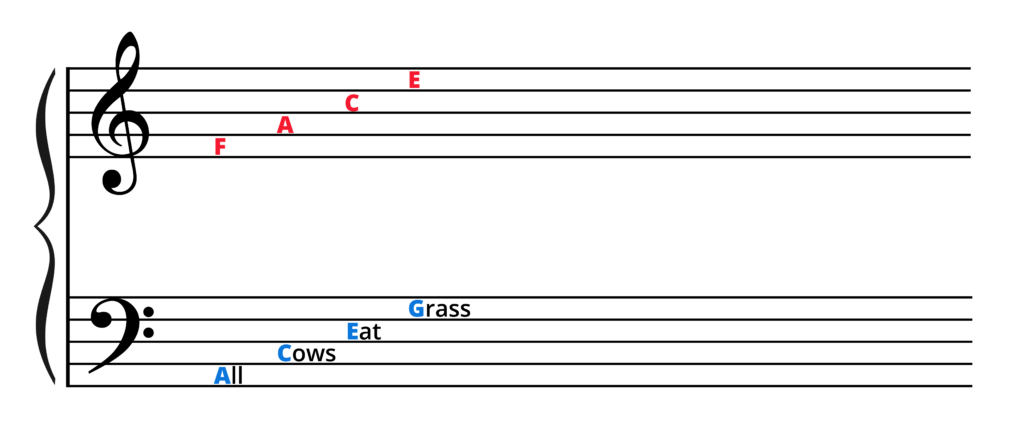
There’s nothing wrong with acronyms, but learning to read notes this way can slow you down. Here’s a better way…
First, understand that all the notes are connected.
This is, fundamentally, how sheet music works! Look at all the notes plotted on the grand staff. There’s no Bass Clef Land or Treble Clef Land. Rather, it’s all on a continuum, and it’s just the alphabet from A to G over and over.
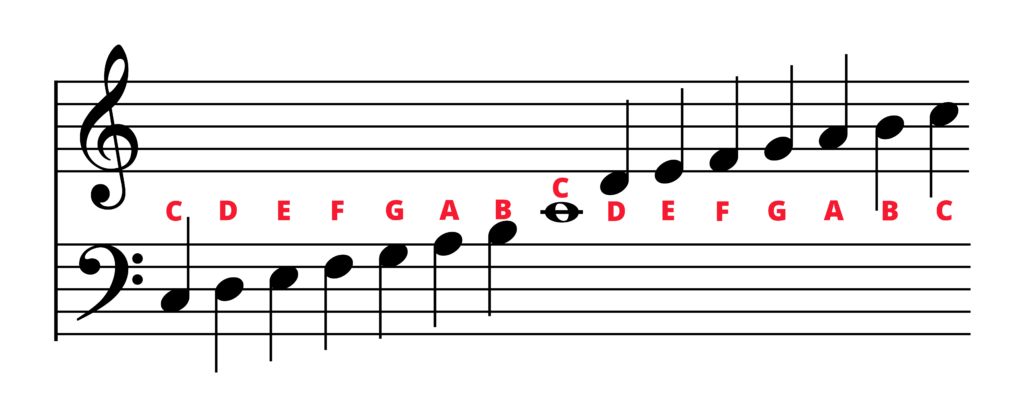
Instead of memorizing acronyms, practice saying the musical alphabet forward and backward. We find this so much more useful!
You use landmarks to help you get to where you’re going. We can use a similar concept in music.
Pick a few notes on the grand staff to memorize. These will be your wayward points, or landmarks. Knowing your landmarks will give you a general idea of where you are up or down the keyboard.
What are good landmark notes, then?
Middle C is a perfect landmark note and it may be the first note you learn. This note is iconic: it’s a little planet floating between the two staves with a line through it.
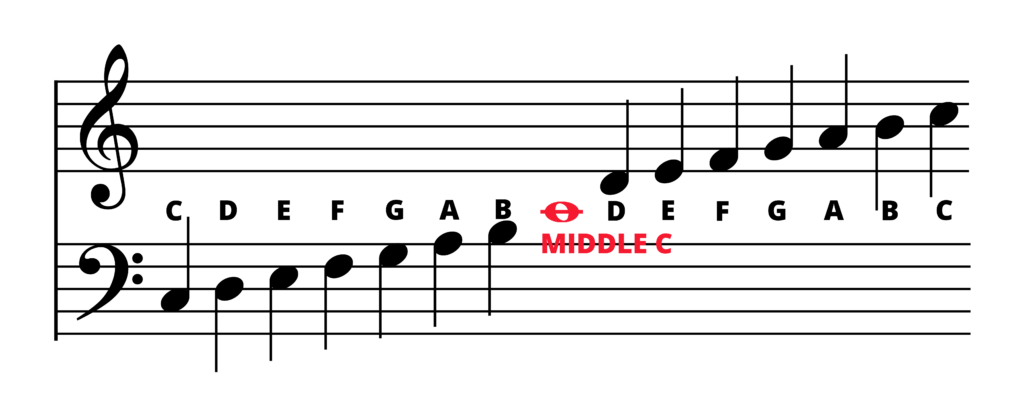
Next, you might want to memorize the Cs above and below Middle C. These are also known as C5 (higher) and C3 (lower). Memorizing these Cs is easy because they’re on the second space from the ends of the staff.
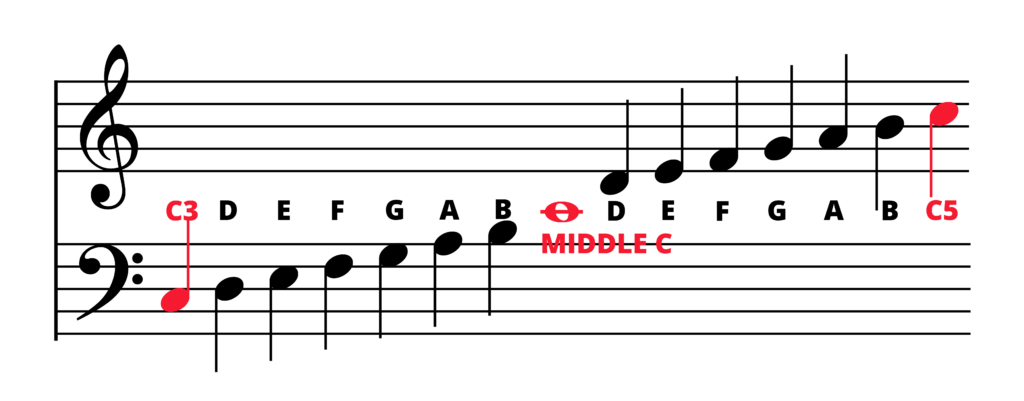
Get used to seeing what “Middle C to C3” and “Middle C to C5” look like, visually, in sheet music. After some practice, you’ll be able to recognize what an octave looks like:
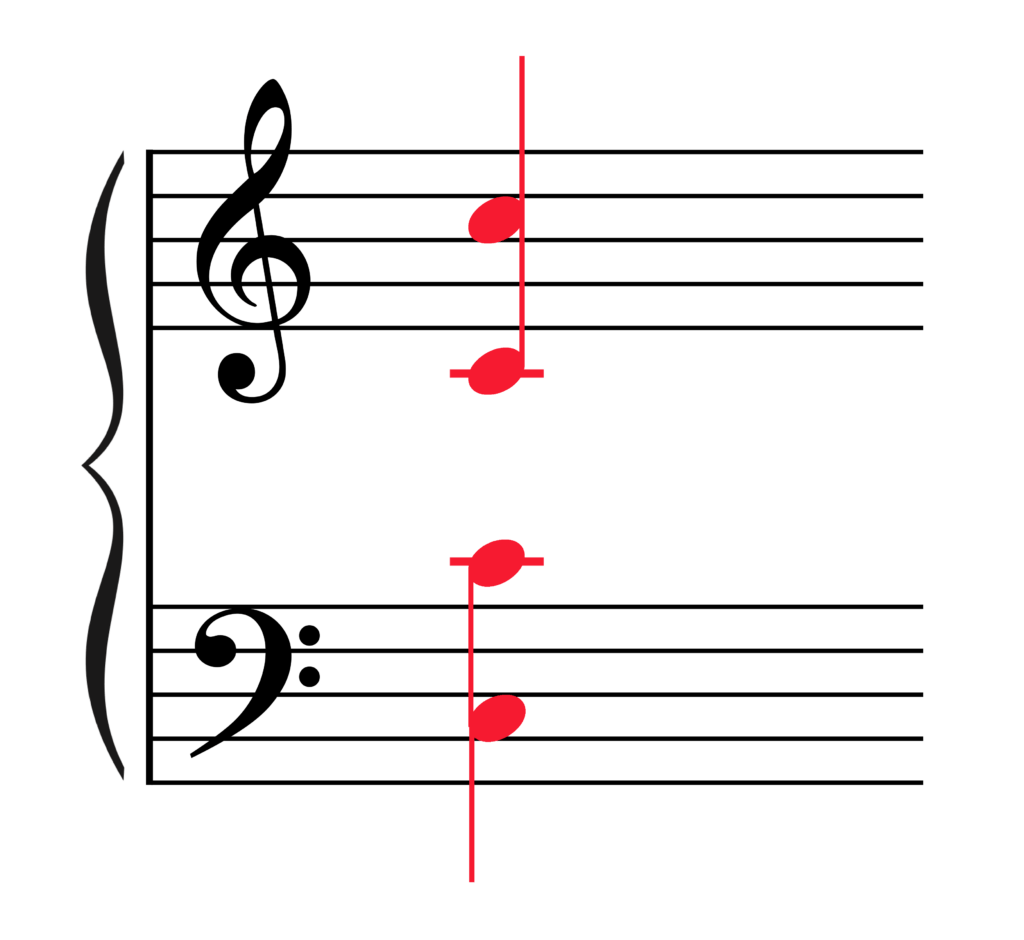
Did you know that the treble clef is also called the G Clef and that the bass clef is also called the F Clef?
There’s a reason for this! The little curl in the treble clef wraps around the second line from the bottom of the top staff. This is where G lives!
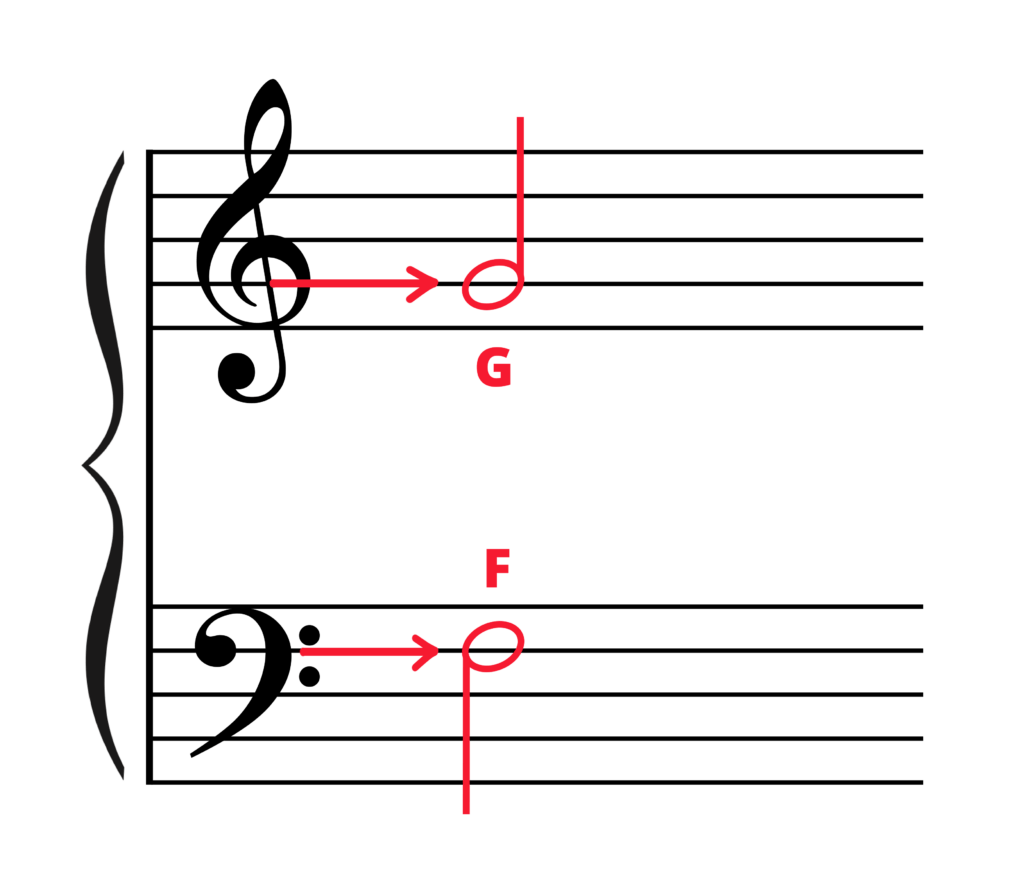
The two dots of the bass clef are above and below the second line from the top of the bottom staff. This is where F lives!
So, G in the treble clef and F in the bass clef are excellent landmark notes to memorize because the clefs show you exactly where they are.
Now you have Middle C, two other Cs, F, and G. This covers a pretty good range across the grand staff.
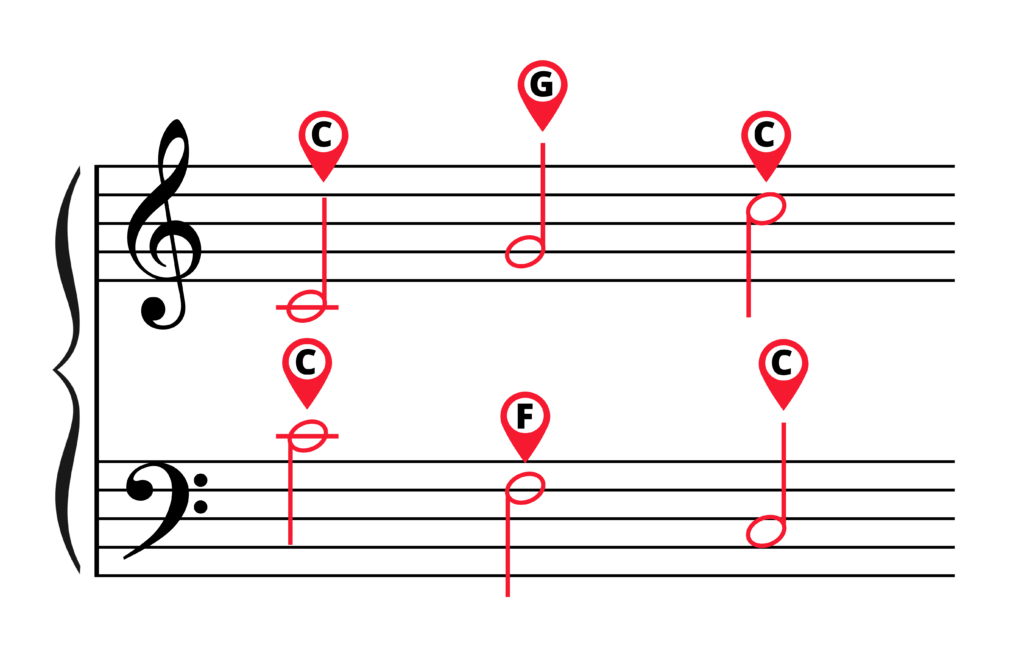
If you think of notes as letters, note patterns are words and phrases spelled from these letters.
Take this little nugget of music. Notice that we go from a line note (Middle C) to a space note (D) to a line note (E) and so on.
When you see a pattern like this—line to space to line to space—this is a series of steps. You’re just moving from one letter of the musical alphabet to the next.
So, instead of thinking and counting “C, D, E…” see this as “step up, step up, step up…”
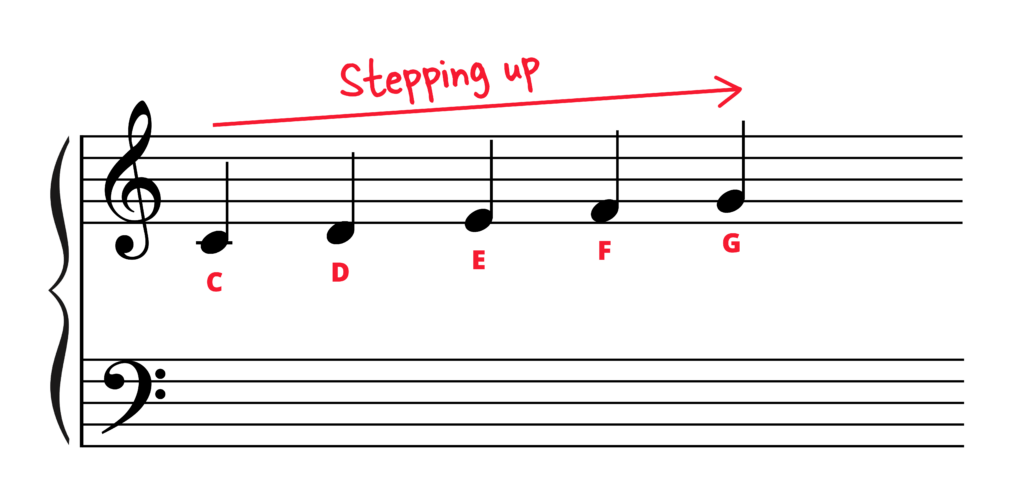
Here’s another pattern: going from line note to line note to line note.
These are what we call skips. That’s when you skip a letter of the musical alphabet. Skips also look like going from a space note to a space note to a space note.
Now, combine your knowledge of steps and skips with the idea that going up or down the staff means playing higher or lower pitches on the keyboard. See if you can read this:
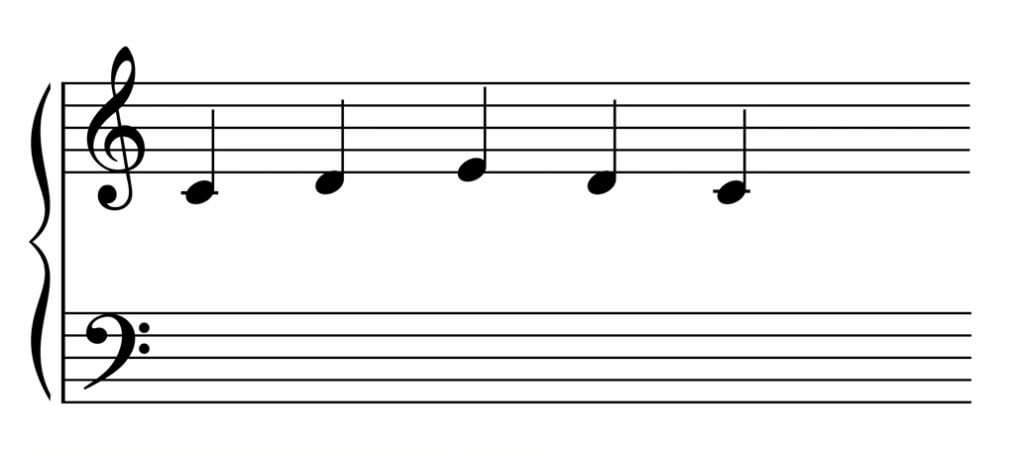
Remember: sheet music is a visual medium. Pay attention to how things look, visually, on the page. Try to connect the graphics you see to the sounds you hear.
Of course, music isn’t always organized by nice legible steps and skips. Sometimes you’ll get larger gaps between notes.
The space between two notes is called an interval. When you have a step (such as C to D), this interval is called a 2nd. When you have a skip (such as C to E), this interval is called a 3rd.
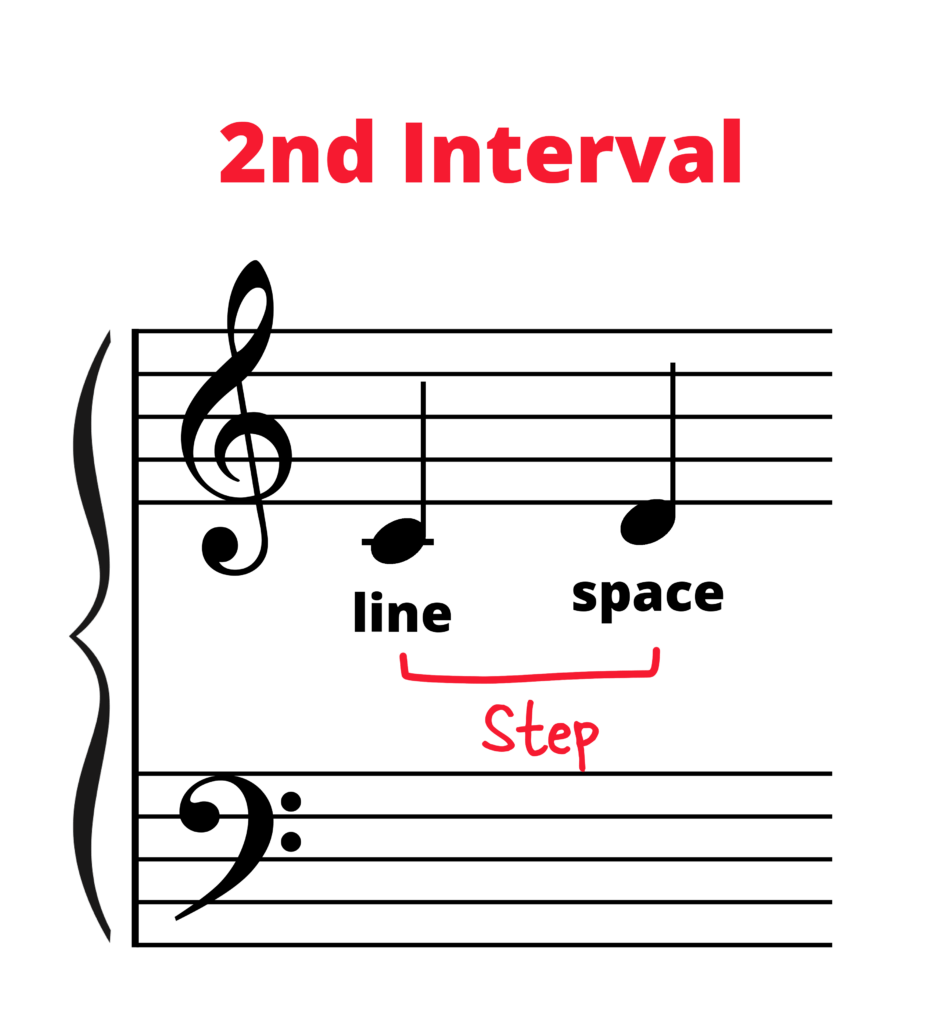
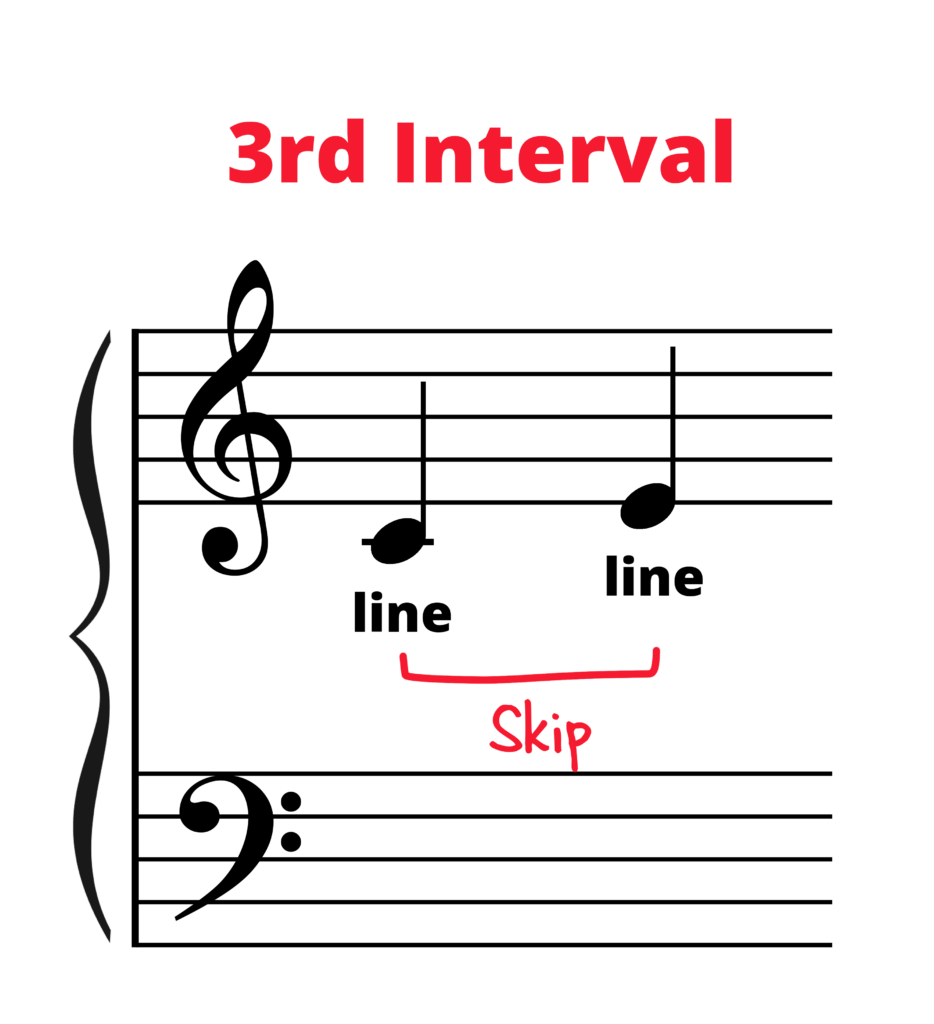
You can learn to visually recognize larger intervals too. For example, the interval of a 4th (such as C to F) is a line note going to a space note with a larger gap in between. Lisa likes to call this a leap.
Similarly, a 5th is a larger distance between two line or two space notes.
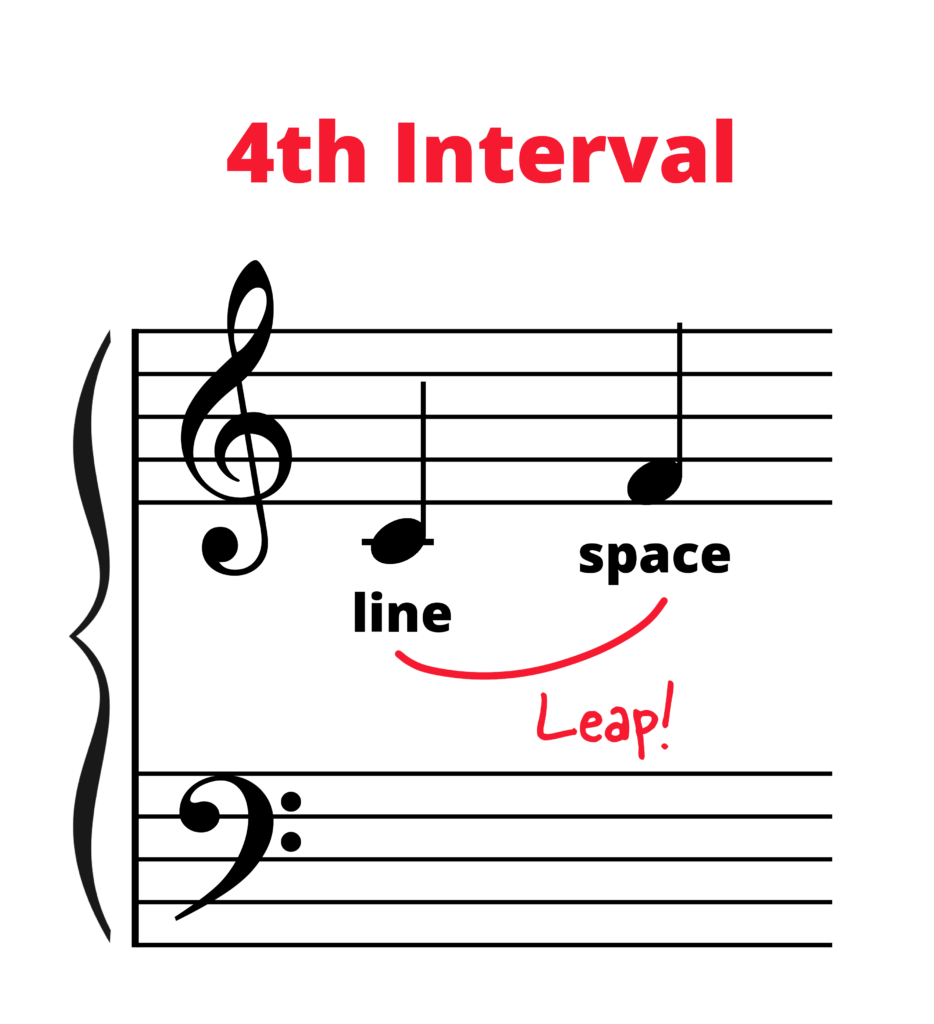
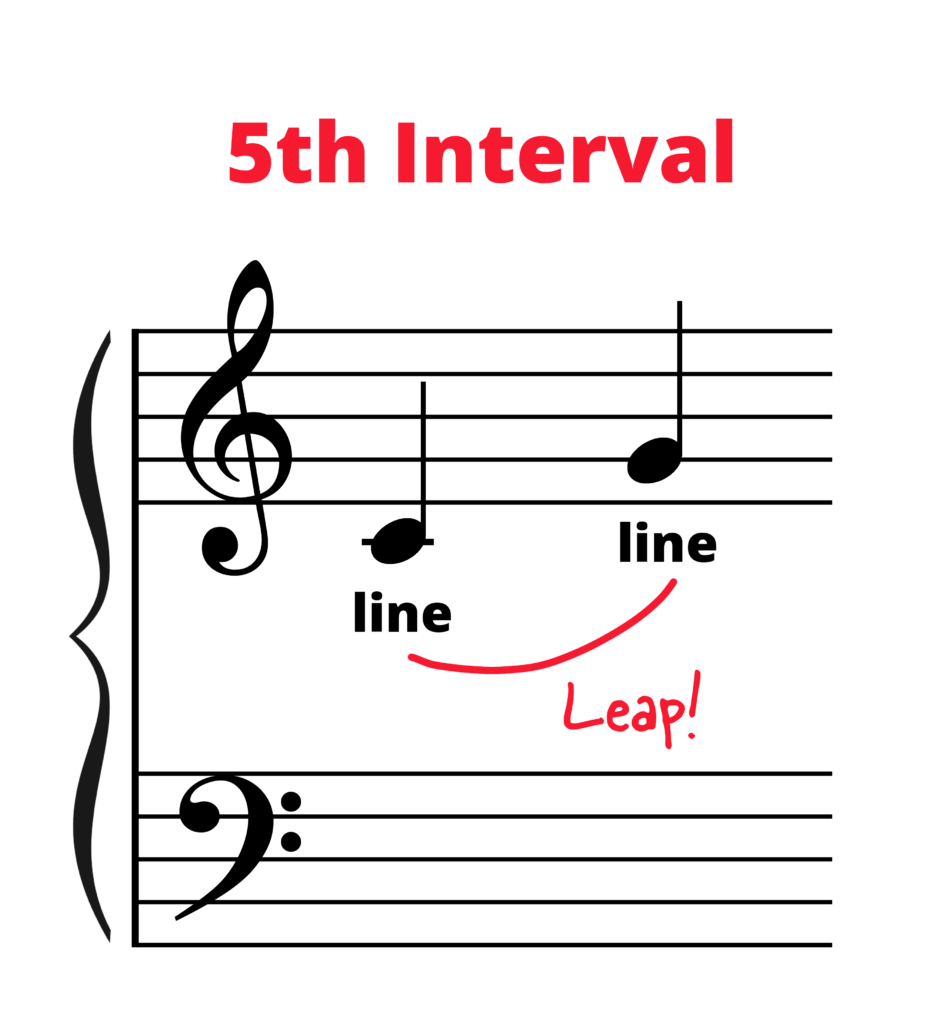
Now let’s put all our knowledge together and read the following passage. See how many notes you can read using landmark notes, skips, steps, and intervals:

You can recognize the first note as middle C. Use that as your base.
The note after that is another line note, with a pretty large gap in between. You might recognize this as a 5th interval. You may also notice that this note sits on the same line as the G clef’s curl, making it G!
Then we go back to middle C. And then we step up three times to F before stepping back down to D.

Recognize the melody?
Mastering the art of sight reading piano music takes time. You won’t get there overnight and that’s totally normal.
It’s just like learning how to read books when you were a kid. You learn the alphabet song, then you learn how to sound out words, then you form sentences, and then you combine sentences into paragraphs, essays, or even books!
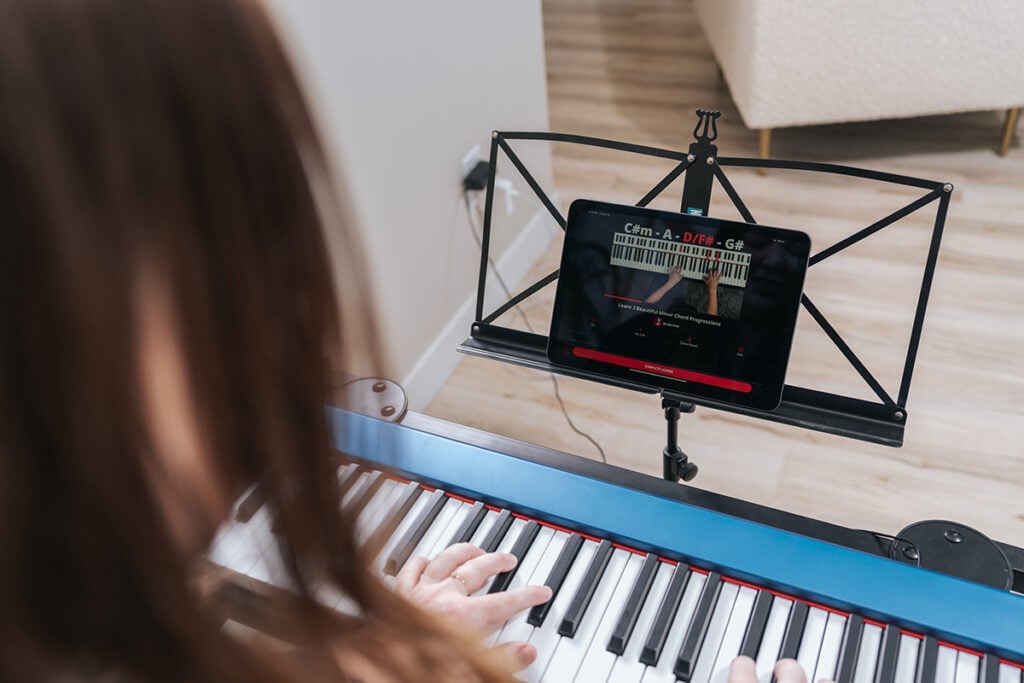
Get a deeper dive into piano, sight reading, and theory as a Pianote+ Member. You’ll get access to our 10-step Method, song library, and growing community of piano players just like you. Plus: get coached by world-class pianists and learn whenever you want, wherever you want, and whatever you want.
TRY PIANOTE FOR 7 DAYSLisa Witt has been teaching piano for more than 20 years and in that time has helped hundreds of students learn to play the songs they love. Lisa received classical piano training through the Royal Conservatory of Music, but she has since embraced popular music and playing by ear in order to accompany herself and others. Learn more about Lisa.
/marketing/pianote/promos/april/banner-bg-m.webp)
We use cookies for traffic data and advertising. Cookie Policy »
/marketing/pianote/promos/april/banner-title.webp)